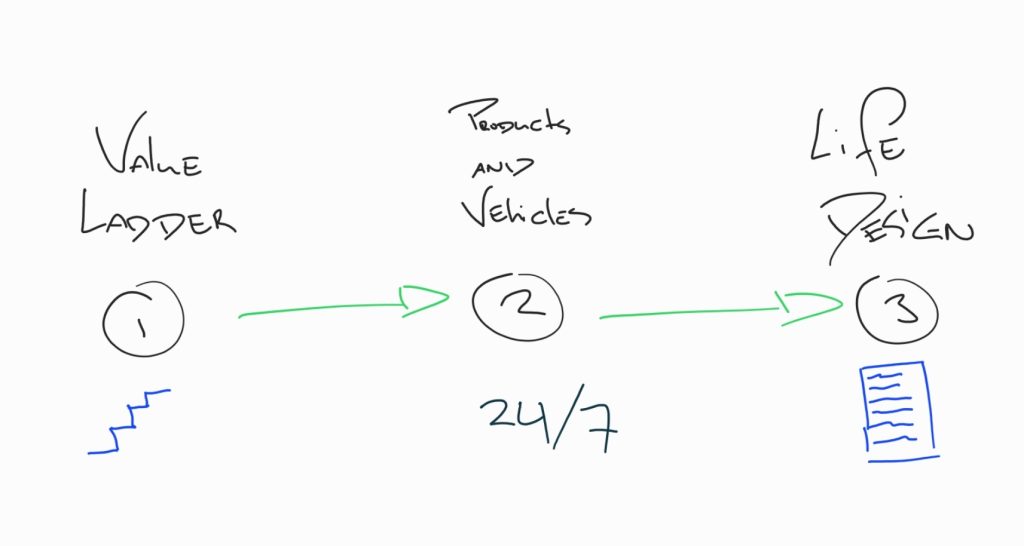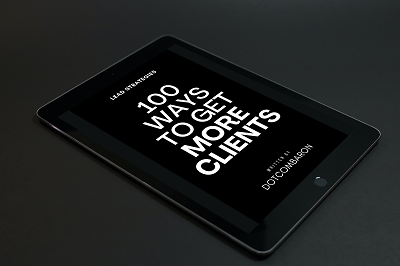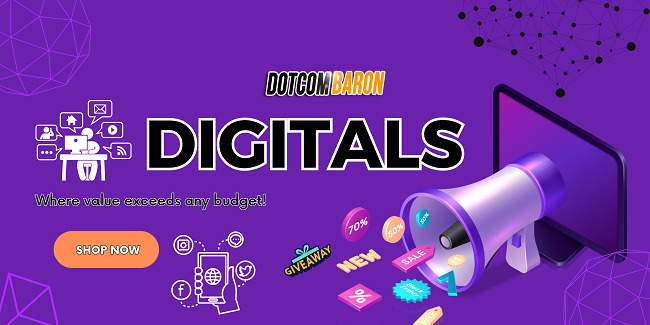The 3 Essential Elements to Kickstart Your Journey to Success
A Guide to Finding Your Purpose and Overcoming Obstacles
Introduction: You Need 3 Elements to Get Started
Are you ready to embark on a journey to success and personal fulfillment? In this article, we will discuss the three essential elements needed to kickstart your journey. These insights have been carefully curated and are offered to you as a guide to transform your life. Don’t underestimate the value of this free information; if followed diligently, it can put you way ahead of the curve.
Little Foreword: Embrace Imperfection and Continual Growth
Perfection can sometimes be the enemy of progress. This article is not perfect, but it is a living document that will be updated regularly to reflect new insights and experiences. The aim is to provide valuable information and inspire you to develop your own process for success. Embrace the spirit of continuous improvement and enjoy the journey.
Remember, the information provided here is intended to help you grow and succeed. Take it seriously and follow the steps in chronological order.
Doing so will put you ahead of the majority of people who struggle to find direction and purpose in life.
Section 1: It’s You Against Your Mind: Overcoming Resistance
Introduction: Your Mind Will Resist Change
Our minds are wired to keep us comfortable, which means they often resist change. As you embark on this journey, you will encounter resistance from your own thoughts. Be aware of these mental obstacles and conquer them by charging forward, regardless of the challenges.

Element 1: Determine Your Value to the World: Skills and Knowledge
Introduction: Discover Your Unique Strengths
To succeed, you must first understand your unique value to the world. This means identifying the skills and knowledge that you possess and can use to make a difference. Reflect on your strengths and consider how they can be applied to benefit others. In this section, we’ll explore a step-by-step process for discovering your unique strengths and how you can develop them further.
Step 1: Self-Assessment
Begin by taking a close look at your current skills and knowledge. Make a list of everything you’re good at, whether it’s a talent you’ve cultivated over time or a natural ability. Don’t be shy – this is your chance to shine! Think about your academic achievements, work experiences, hobbies, and even your interpersonal skills.
Step 2: Seek Feedback
Once you’ve completed your self-assessment, reach out to friends, family, and colleagues for their input. They may have insights into your strengths that you haven’t considered. Ask them for specific examples of when they’ve seen you excel or demonstrate a particular skill. This feedback will help you gain a more well-rounded understanding of your unique strengths.
Step 3 (H3): Identify Your Passions
Next, think about the activities and subjects that genuinely excite you. Your passions can provide important clues about the skills and knowledge you should focus on developing. When you’re passionate about something, you’re more likely to invest time and effort into honing your abilities in that area.
Step 4: Align Your Strengths and Passions
Now that you have a clear understanding of your strengths and passions, it’s time to find the intersection between the two. Look for areas where your skills and interests naturally align. These are the areas where you’re most likely to find success and make a meaningful impact on the world.
Step 5: Develop Your Skills and Knowledge
Once you’ve identified your unique strengths, it’s crucial to continue developing them. Pursue further education, attend workshops, read books, or seek mentorship in your areas of interest. By constantly improving your skills and knowledge, you’ll be better equipped to create value and make a difference in the lives of others.
Step 6: Share Your Value with the World
Finally, with your unique strengths and passions in hand, it’s time to share your values with the world. Look for opportunities to apply your skills and knowledge in ways that benefit others, whether it’s through your career, volunteering, or starting your own venture. The more you put your strengths to work, the more successful and fulfilled you’ll become.
Conclusion: Embrace Your Unique Value
Remember, discovering and embracing your unique value is an ongoing journey. Continue to assess your strengths, seek feedback, and align your passions with your abilities. By doing so, you’ll not only find success but also make a lasting, positive impact on the world around you.

Element 2: Vehicles to Take Your Value to the Marketplace
Introduction: Choose the Right Platform
Once you’ve identified your value, the next step is to find the best way to share it with others. This could be through a business, a blog, a YouTube channel, or any other platform that allows you to reach your target audience. Research different options and select the one that aligns with your skills and passions. In this section, we will explore multiple example cases to help you choose the right platform for sharing your unique value with the world.
Example 1: Starting a Business
If you have a unique product or service idea, starting a business can be an excellent way to bring your value to the marketplace. Consider a talented chef who wants to share their culinary skills. They might open a restaurant or start a catering business to showcase their abilities and satisfy customers’ cravings. Similarly, if you’re skilled in web design, you could launch a web design agency to help businesses create beautiful, functional websites.
Example 2: Creating a Blog
A blog can be an excellent platform for sharing your knowledge and experiences with a broader audience. If you’re passionate about fitness and have extensive knowledge about workout routines and nutrition, you could start a fitness blog where you share tips, advice, and personal stories. This platform allows you to reach people who share your passion and help them achieve their fitness goals.
Example 3: Launching a YouTube Channel
For those with a knack for creating engaging video content, a YouTube channel can be a powerful way to share your value with the world. A skilled musician might start a YouTube channel where they upload videos of their performances, tutorials, or even behind-the-scenes glimpses into their creative process. This platform enables you to connect with fans and aspiring musicians alike, providing entertainment and valuable information.
Example 4: Offering Online Courses or Workshops
If you’re an expert in a particular field, you might consider offering online courses or workshops to share your knowledge with others. For example, a professional photographer could create an online course teaching photography techniques, tips for using different camera equipment, and editing skills. This vehicle allows you to empower others with your expertise and create additional income streams.
Example 5: Using Social Media Platforms
Social media platforms like Instagram, Facebook, or Twitter can also be effective vehicles for sharing your value with the world. A talented artist might use Instagram to showcase their artwork, build a following, and connect with potential buyers. Similarly, a life coach could use Facebook or Twitter to share motivational content and tips for personal development, while also connecting with potential clients.
Conclusion: Selecting the Best Vehicle for Your Unique Value
When choosing the right platform to share your value with the world, consider your strengths, passions, and target audience. Take the time to research various options and think about which vehicle best aligns with your goals and abilities. By selecting the right platform, you’ll be better equipped to make a lasting impact and achieve success in your chosen field.

Element 3: Set Goals and Desires to Pull You Through Obstacles
Introduction: The Power of Goal Setting
The final element to kickstart your journey is setting goals and desires. These will act as your compass, guiding you through obstacles and providing motivation when you face challenges.
Create a clear vision of what you want to achieve, and use it to stay focused on your path to success. In this section, we’ll delve deeper into the power of goal setting and explore multiple example cases to inspire your journey.
Step 1: Define SMART Goals
When setting goals, it’s important to make them SMART: Specific, Measurable, Achievable, Relevant, and Time-bound. This approach helps you create clear, actionable goals that will keep you motivated and on track.
Example 1: A freelance writer wants to increase their income. A SMART goal could be: “I will increase my monthly income by 20% within three months by securing three new long-term clients and pitching five guest posts per week.”
Example 2: A fitness enthusiast aims to improve their running endurance. A SMART goal might be: “I will run a half-marathon in under two hours within six months by following a structured training plan and increasing my weekly mileage.”
Step 2: Break Your Goals Down into Smaller Tasks
Once you’ve set your SMART goals, break them down into smaller tasks to make them more manageable. This helps you maintain momentum and track your progress over time.
Example 1: The freelance writer could break their goal into tasks such as researching potential clients, creating a list of publications for guest post pitches, and developing a writing portfolio.
Example 2: The fitness enthusiast could create a detailed training plan, set intermediate milestones (e.g., running a 10K race), and establish a schedule for cross-training and rest days.
Step 3: Stay Accountable
To stay on track and maintain motivation, establish a system of accountability. This could involve sharing your goals with friends or family, joining a group or community focused on similar objectives, or working with a coach or mentor.
Example 1: The freelance writer might join a professional writer’s group for networking, support, and feedback on their pitches.
Example 2: The fitness enthusiast could sign up for a local running club or find a training partner to help them stay accountable and motivated.
Step 4: Adapt and Adjust as Needed
As you work towards your goals, you may encounter obstacles or find that your initial plans need tweaking. Be prepared to adjust your approach and remain flexible, while keeping your ultimate goal in mind.
Example 1: The freelance writer may discover that certain publications are not a good fit for their work. They can adjust their strategy by targeting different publications or exploring new niches.
Example 2: The fitness enthusiast may experience an injury or hit a training plateau. They can adapt by adjusting their training plan, incorporating additional recovery days, or seeking advice from a coach or physiotherapist.
Conclusion: Achieve Success with Goal Setting
By setting SMART goals, breaking them down into manageable tasks, maintaining accountability, and adapting as needed, you can achieve your desires and overcome obstacles along the way. Use these strategies and example cases as inspiration to create a clear vision for your future and stay focused on your path to success.
Conclusion (H1): Your Journey to Success Starts Now
With these three essential elements in place, you’re now ready to embark on your journey to success.
Remember to be persistent, embrace continuous improvement, and stay focused on your goals.
As you gain experience and learn from your mistakes, you’ll find yourself growing and thriving in ways you never thought possible.
The world is waiting for you to share your unique value – now go out there and make it happen!
Oh, and don’t let anyone influence you because they will pop up like mushrooms in autumn…







